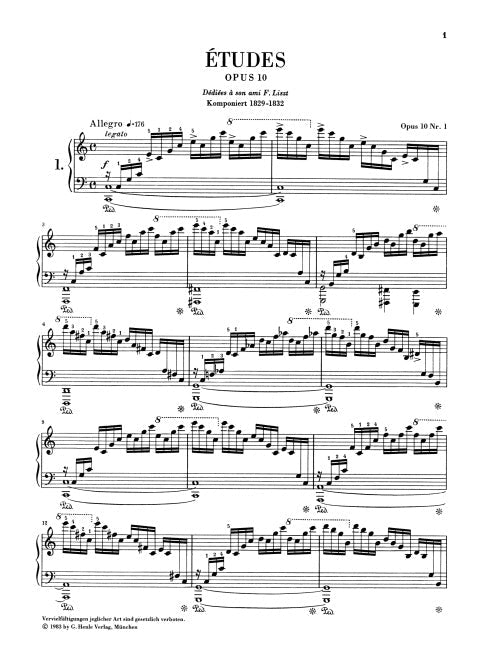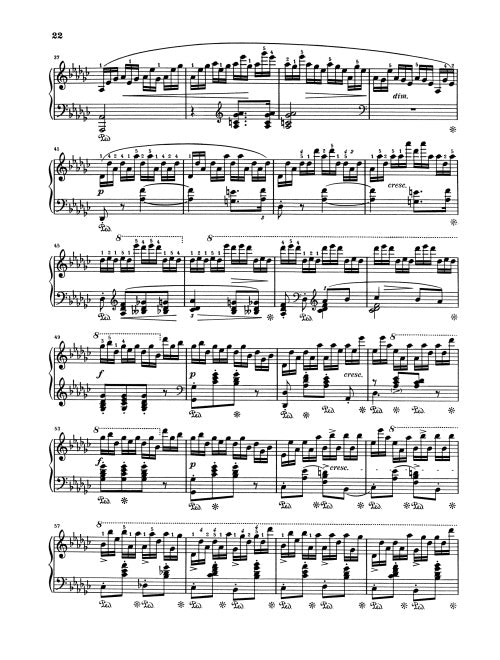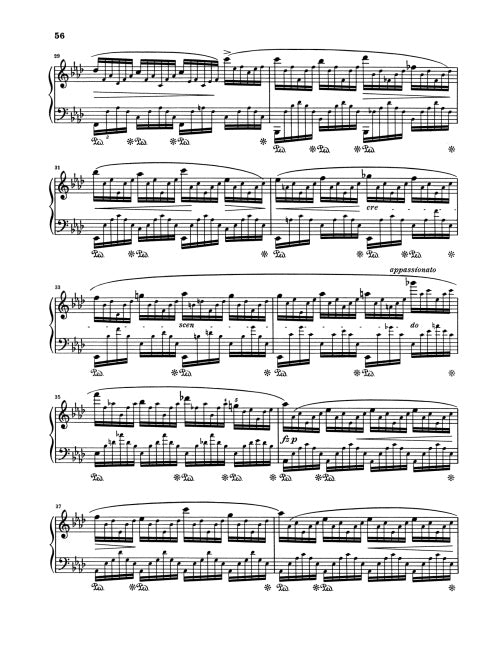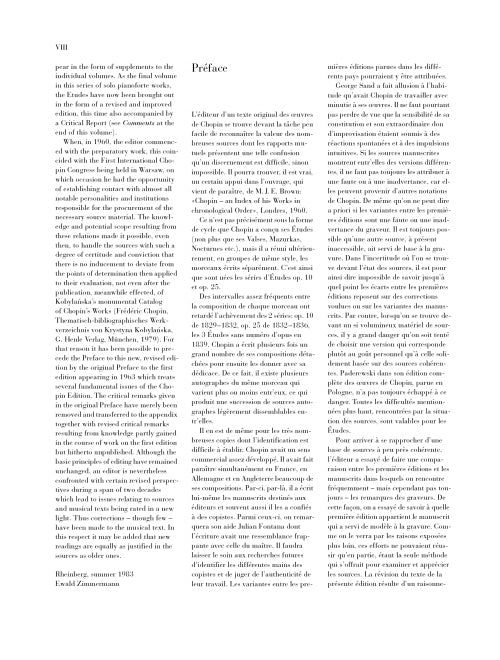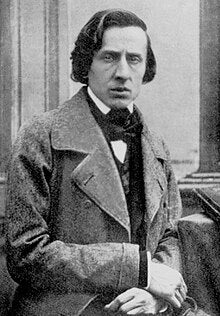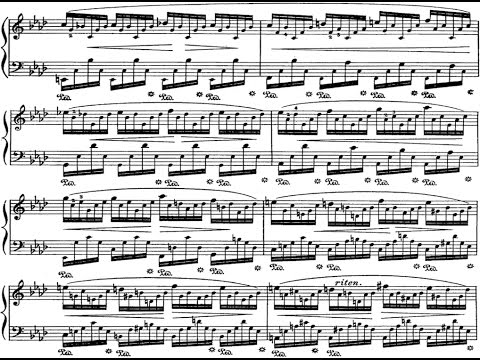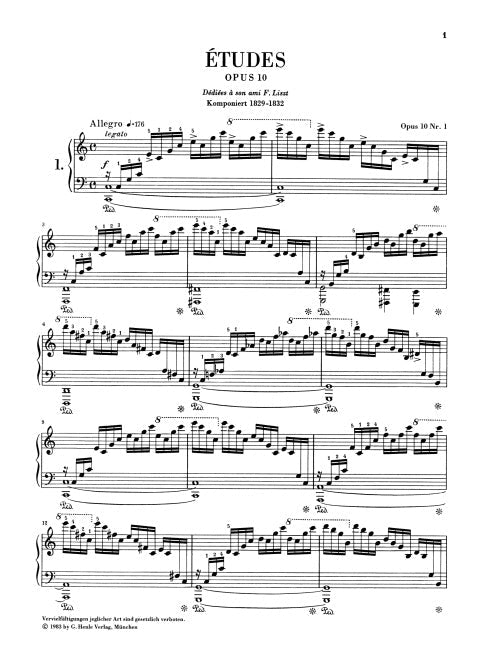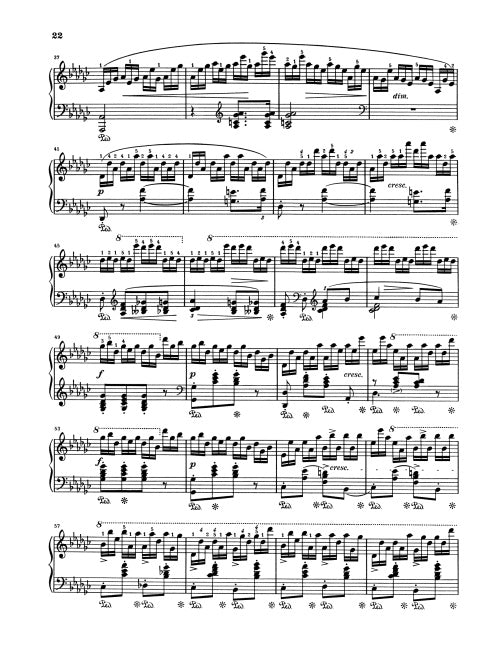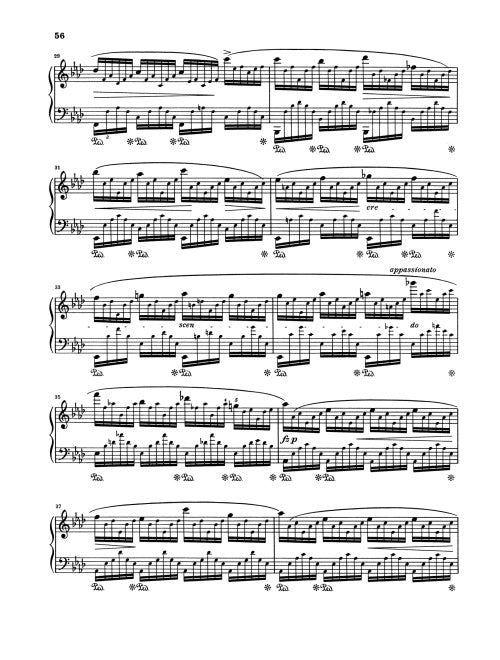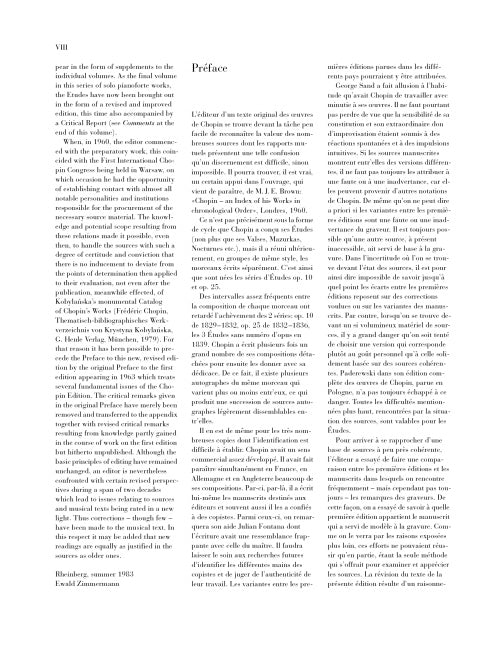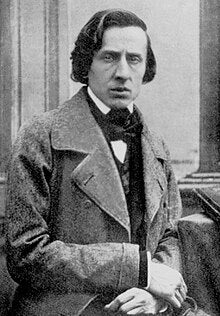- Etude C major op. 10,1
- Etude A minor op. 10,2
- Etude E major op. 10,3
- Etude C sharp minor op. 10,4
- Etude G flat major op. 10,5
- Etude E flat minor op. 10,6
- Etude C major op. 10,7
- Etude F major op. 10,8
- Etude F minor op. 10,9
- Etude A flat major op. 10,10
- Etude E flat major op. 10,11
- Etüde (Revolution) C minor op. 10,12
- Etude A flat major op. 25,1
- Etude F minor op. 25,2
- Etude F major op. 25,3
- Etude A minor op. 25,4
- Etude E minor op. 25,5
- Etude G sharp minor op. 25,6
- Etude C sharp minor op. 25,7
- Etude D flat major op. 25,8
- Etude G flat major op. 25,9
- Etude B minor op. 25,10
- Etude A minor op. 25,11
- Etude C minor op. 25,12
- Etude F minor KK IIb, 3,1
- Etude A flat major KK IIb, 3,2
- Etude D flat major KK IIb, 3,3
Frédéric Chopin
Pianist and composer. His work is concentrated around piano music that enjoys extraordinary popularity and has become an integral part of the concert repertoire. His music influenced subsequent generations in France (Franck, Saint-Saëns, Fauré, Debussy) as well as Smetana, Dvořák, Balakirev, Grieg, Albéniz.
| 1810 | Born in Żelazowa Wola near Warsaw on March 1. First compositions at age seven, his first public performance at eight. |
| 1822 | Private instruction in composition. |
| 1825 | Rondo in C minor, Op. 1, his first published work. |
| 1826–29 | Studies at the Institute of Music in Warsaw. |
| 1829 | “Fantaisie sur des airs nationaux polonaise” in A major, Op. 13; Piano Trio in G minor, Op. 8. Travels to Vienna, where he gives two concerts of his compositions and improvisations. |
| 1829–33 and 1835–37 | Etudes, Opp. 10 and 25 -- a new type of virtuosic etude that also makes aesthetic demands. |
| 1830 | Premieres in Warsaw of his two piano concerti, Op. 21 in F minor and Op. 11 in E minor. |
| 1831 | Unable to return to Warsaw due to the Polish uprising, he goes to Paris, where he will remain until the end of his life. |
| 1832 | Debut concert in Paris to great acclaim. |
| 1835/38 | “Trois valses brillantes,” Op. 34. |
| 1836/39 | “24 Preludes,” Op. 28, in a cyclic succession: compactly-designed short pieces. |
| 1835/39 | Piano Sonata in B-flat minor, Op. 35, with the funeral march. |
| 1842/43 | Ballade No. 4 in F minor, Op. 52; “Grande Polonaise brillante” in A-flat major, Op. 53; Scherzo No. 4 in E major, Op. 54. |
| 1844 | Piano Sonata in B minor, Op. 58 |
| 1849 | Completion of the mazurkas in G minor and F minor. Death in Paris on October 17. |



